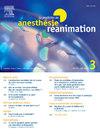地震疗法的麻醉
Q4 Nursing
引用次数: 0
摘要
地震疗法的应用越来越广泛,特别是因为它适用于严重的抑郁状态。其目的是获得全身抽搐发作。患者通常需要连续接受数次治疗。电击装置还可以记录脑电活动。癫痫治疗在全身麻醉的情况下进行。所有精神药物都会干扰致痫阈值,但很少有药物需要在地震疗法前停用。地震疗法前不应停用抗凝药物。麻醉通常在手术室外进行,必须保证所有安全条件。可使用催眠药(丙泊酚/依托咪酯)和颅内麻醉剂(琥珀胆碱或罗库溴铵联合拮抗剂),并使用面罩通气。电休克疗法越来越多地用于包括抑郁症在内的一些精神疾病。其目的是诱发癫痫大发作。患者接受电休克治疗的时间要在几天或几周内连续进行几次。电击装置也用于记录脑电活动。患者通常会服用干扰癫痫阈值的精神药物。在进行颅内电刺激治疗之前,抗凝剂并非必须中断。麻醉通常在手术室外进行,使用短效催眠药,并需要使用氯库林或罗库溴铵加苏甘胺,以避免癫痫发作后的创伤。其他并发症包括高血压、脑出血、心动过缓和癫痫大发作。本文章由计算机程序翻译,如有差异,请以英文原文为准。
Anesthésie pour sismothérapie
La pratique de la sismothérapie est croissante notamment du fait de son indication dans les états dépressifs graves. L’objectif est d’obtenir une crise convulsive généralisée. Les patients ont souvent plusieurs séances consécutives. Les appareils qui délivrent l’électrochoc peuvent aussi enregistrer l’activité électroencéphalographique. La sismothérapie s’effectue sous anesthésie générale. Tous les psychotropes interfèrent avec le seuil épileptogène mais peu d’entre eux doivent être interrompus avant sismothérapie de ce fait. L’arrêt des anticoagulants avant sismothérapie n’est pas systématique. L’anesthésie qui s’effectue souvent hors bloc doit garantir toutes les conditions de sécurité. Elle peut être réalisée avec un hypnotique (propofol/étomidate) associé à un curare (succinylcholine ou rocuronium associé à une antagonisation) en ventilation au masque. Trois types de complications peuvent survenir : cardiovasculaires (bradycardie, hypertension), état de mal convulsif et traumatiques.
Electroconvulsive therapy is more and more commonly indicated in some psychiatric disorders including depression. The aim is to induce a grand mal seizure. Patients’ schedules for electroconvulsive therapy undergo several sequences over a few days or weeks. Devices delivering the electroshock are also used for recording of the electroencephalographic activity. Patients may commonly take psychotropic agents interfering with the epileptic threshold. Anticoagulants are not obligatorily interrupted before sismotherapy. Anaesthesia, commonly performed outside the operating room, is achieved with a short acting hypnotic and requires the use of celocurine or rocuronium plus sugammadex to avoid post-seizure traumas. Other complications include hypertension, cerebral haemorrhage, bradycardia and grand mal seizures.
求助全文
通过发布文献求助,成功后即可免费获取论文全文。
去求助
来源期刊

Praticien en Anesthesie Reanimation
Medicine-Anesthesiology and Pain Medicine
CiteScore
0.10
自引率
0.00%
发文量
61
审稿时长
51 days
期刊介绍:
Conçu et élaboré pour la formation médicale continue des anesthésistes réanimateurs, Le Praticien en anesthésie réanimation répond à des objectifs clairement définis. - Être au plus près de votre quotidien : la revue vous apporte des réponses immédiatement opérationnelles aux problèmes rencontrés dans votre exercice.
 求助内容:
求助内容: 应助结果提醒方式:
应助结果提醒方式:


